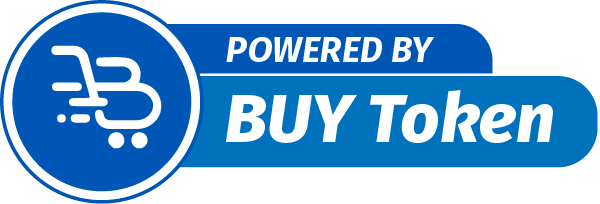Engaging in ongoing therapy, education, and personal development activities helps reinforce your commitment to sobriety and ensures you have the tools needed to face challenges head-on. Embrace this transition as a positive step Sober House towards a fulfilling, sober life. An often-overlooked aspect of transitioning is the importance of building a strong support network. Sober living homes encourage connections with peers who share your commitment to recovery.
What Are the Resident Requirements at a Sober Living?
Not adhering to these rules can lead to consequences, with severe breaches potentially resulting in eviction. Anyone who wants to stop drinking alcohol or using drugs should consider joining a sober living community. Many residents complete a rehabilitation program prior to approaching a sober living home, but this is not mandatory. If you have already gone through rehab, but you’re not quite ready to live independently, this type of facility may be an excellent fit for you. However, outpatient rehab that you may attend during your time in a sober living home may be covered by insurance.
Build Healthy Relationships
After reading through this guide, you’ll find you have many factors to weigh as you consider how to start a sober living home. The Drug Rehab Agency is your partner here to help guide you through the process. In https://thefloridadigest.com/top-5-advantages-of-staying-in-a-sober-living-house/ response, policymakers have attempted to create laws allowing states to regulate sober living homes. Residences in areas with a higher cost of living, such as New York and California, may be more expensive.
Define what Makes your Sober Living Special
- Sober living houses are often recommended for folks finishing up a drug rehabilitation program.Leaving the structure of a treatment program can be jarring, sometimes triggering a relapse.
- This peer support system encourages open dialogue, sharing of experiences, and mutual encouragement, creating a network of support that’s invaluable during recovery.
- In your business plan, you’ll identify the sober living homes in the area that serve as your primary competitors.
- Ensuring that the administration of an SLH or halfway house is vigilant about complying with any kind of necessary inspections is an important part of establishing its validity as a reputable residence.
- Some critics blame and want to overturn the state’s inclusive housing policy.
Sober living homes often have an interview procedure before they take on new residents to ensure that residents are motivated and ready for this level of care. The suit describes an incident in 2017 where a female resident of one of the sober homes asked McCarthy for an overnight pass to allow her to spend the night at her mother’s house and visit her daughter. McCarthy said he would give the woman the pass if she “made breakfast” for him in the morning, which she understood to be a reference to sex. Coburn is in an outpatient addiction program and is active in Alcoholics Anonymous, sometimes attending multiple meetings a day. Every week, the small payments from the Medi-Cal experiment feel like small wins, he said.

Is There a Difference Between Sober Living and Halfway Houses?
While both types of residential environments may offer access to counseling and support groups, halfway houses may offer more intensive therapy and medical services to address specific mental health needs. Typically, sober living houses aren’t as widely covered by insurance plans as rehabilitation centers. The Affordable Care Act (ACA) declares that insurance providers ought to include treatment for substance abuse disorders.
Patient Care Network

With the assistance of a support network, it’s less likely that you will relapse. The main reason an SLH or halfway house exists is to help residents learn to live everyday life without drugs or alcohol. Therefore, any residence you’re thinking of living in should support this goal by requiring abstinence and helping residents prevent relapse. Moreover, sober living homes often connect residents with a variety of recovery resources. Access to counseling services, both individual and group therapy, is a key component.
- A new house member must be interviewed by current residents and must receive an 80 percent vote of approval to be accepted.
- You’ll learn financial responsibility by paying rent, time management by following the house schedule, and self-care practices crucial for maintaining sobriety.
- In response, policymakers have attempted to create laws allowing states to regulate sober living homes.
Sober homes provide mutual support, emphasize independent living skills, and depend on peer leadership. Sober living homes, sometimes referred to as transitional living arrangements, halfway houses, or recovery residences, can be a step down from formal substance use treatment programs. These homes can offer an in-between option for individuals after they complete a treatment program and before they return to their homes and lives. This transition can provide continued support while residents learn to apply their newly learned self-reliant skills to real-life situations while they remain drug- or alcohol-free in a community environment. Overall, both sober living homes and halfway houses can provide a supportive and safe environment for individuals in recovery to build a foundation for a healthy and fulfilling life in sobriety.
How Much Does Recovery Housing Cost?
- First, if you’re recently leaving a rehab stay or have just wrapped up an outpatient program, a sober living facility may provide you with the structure you need.
- Level IV services include in-house clinical services and programming and life skill development.
- However, outpatient rehab that you may attend during your time in a sober living home may be covered by insurance.
- Total abstinence may be the goal, but the reality is that setbacks are common.
- Choosing a residence can be a tough decision because there are many different residences available.
Department of Housing and Urban Development said requiring sobriety is not necessarily anti-housing first. The bills come as California’s homelessness population is skyrocketing, having increased from about 118,000 in 2016 to more than 181,000 last year. Some critics blame and want to overturn the state’s inclusive housing policy. At the same time, as public fears about crime soar, voters in some liberal cities are putting limits on who can receive public assistance. People in recovery can experience a lot of shame simply for having become addicted in the first place. The symptoms involved in PAWS can be a barrier to recovery if you’re not careful.

